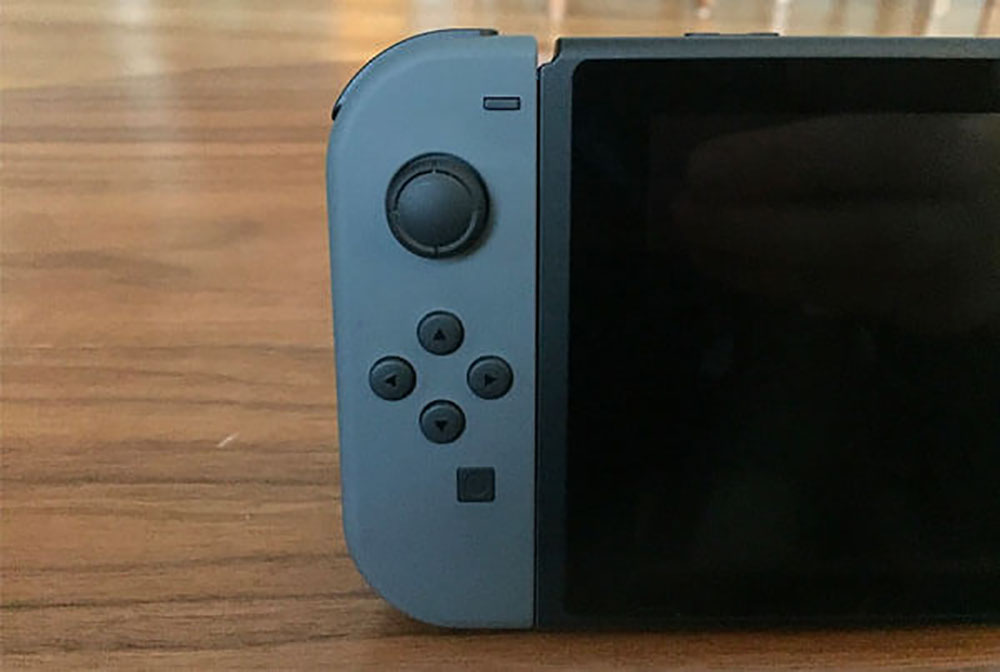There is nothing wrong with letting your children use a mobile device however, you should bear in mind their online safety. The application of parental controls can vary from device and restrictiveness but, they allow a parent to control a child’s activity. To make things easy, we have answered some frequently asked questions surrounding parental controls and setups.
What are parental controls?
Parental controls are features that allow parents to restrict the access of content to their children. These controls are often present on mobile devices, tablets, digital television services, computers, and video games.
How do you put on parental controls?
The application of parental controls vary dependent on your device and the level of restriction you wish to impose. You can apply parental controls via your home networking, through your browser, on your device, or through an application. There is no particular method that is more or less effective than another method however, all have benefits and drawbacks.
Benefits:
Going directly to the internet router allows you to fully control the settings of your internet in your home regardless of device or browser. This makes it much more difficult for your child to access restricted websites.Drawbacks:
Although this may block certain sites such as pornography, this will not protect against everything so a child could still make micro-transactions on phone applications.
Dependent on the age groups of your children, older children could use mobile data to still access harmful sites.
Benefits:
These are free to use and apply to everything that device uses. Some controls also allow you to set parent and child users with unique passwords so your child can’t easily turn off the controls.
Drawbacks:
These are only device specific so your child can still access unwanted sites on other devices.Benefits:
Some parental control apps allow users to block websites, set screen time limits and monitor your child’s activity on the internet.Drawbacks:
These can be costly and often require a paid subscription.
Can you put parental controls on iPhones?
There are pre-existing parental controls on iPhones. The most basic of these is known as “Restrictions.” Restrictions allow you to control what your child can download, the browser they can access and the stores and games they can use. Restrictions also allow to you to prevent in-app purchases, adding friends to games and installing apps. These can be accessed via “Settings” where you can choose a password, choose which features and content you want to restrict and apply safe-search settings.
“Guided Access” is a form of parental control that allows you to lock your phone on an app so your child cannot click out of it. You can find this under the “Settings” tab. Simply apply a password and launch your app. Your child will not be able to click out and cannot turn off Guided Access without the password.
iTunes preferences will not apply to everyone, but if you download content to your computer and share it to iCloud, it can be accessed via your iPhone. Using the “Parental” setting, you can control what your child can download as well as setting restrictions for specific ratings for television and films.
How To Set Up Parental Controls For IOS Apps & Other Features

To set up parental controls for Safari, Camera, AirPlay, CarPlay, Facetime, Siri, iTunes, iBooks, Apple Music and App Store, simply follow the steps: Go to Settings – General – Restrictions – Enter your Restrictions passcode.
To disable, tap the toggle next to the desired app so the toggle appears GREEN. This now restricted.
Set Up Restrictions on Music, Podcasts & News, Movies, TV Shows And Apps By Age Ratings
Before setting your age restriction, first you will have to choose a country. This does not have to be the country that you currently live in, but it is sensible to set it to your current country.
To do this, follow the simple steps: Go to Settings – General – Restrictions – Ratings For – Choose your desired country. A blue tick should appear next to your chosen country or region.
Set Up Restrictions On Music, Podcasts & News, Movies, TV Shows And Apps By Age Ratings
-
1
Go to Settings
-
2
General
-
3
Restrictions
-
4
Ratings For
-
5
Choose your desired country. A blue tick should appear next to your chosen country or region.
Android Parental Features
Like iOS, Android also offers a range of parental control features designed to help protect your child when using a mobile phone or tablet. Here at Mobile Phones Direct, we have created an in-depth guide which talks you through the steps of setting up parental controls on your child’s device.
Setting Up a New User Account
Parents, if you or your child own a mobile phone or tablet which runs Android 4.2 or higher, you can add a new user account immediately.
The new account can be the one with restrictions enabled, meaning you can then easily switch between your account and the ‘safe’ account if you let your child use your device – or if it’s their phone – only use the ‘safe’ account.
To set up a new user account, just follow these steps:
-
1
Tap on Settings.
-
2
Select Users & accounts.
-
3
Tap on Users. Select Add user.
-
4
A pop up will appear which provides information on how user accounts work. Tap OK to continue.
-
5
Select Set up now. Your phone will now lock, so swipe to unlock.
-
6
Read the information and tap Continue.
-
7
If the user has a Google account, they can sign in. If not, select More options to create one. Enter the Password for the Google account and tap Next.
-
8
Tap on I agree to complete the process for adding a new user.
-
9
Press Next to learn more about Google Assistant.
-
10
Untick any of the Google Services that you do not agree with, and press Agree. Now you have created a new user account for your child, you can customise the account’s parental control settings to match your child’s age.
How To Block Unsafe Content in Chrome?
Chrome is Android’s pre-installed web browser, so you do not have to install any third-party apps 
for safe internet browsing. Safe Browsing helps block sites which can be malicious and contain any malware, viruses, phishing attacks, and cyber security threats.
To enable Safe Browsing, follow the steps below:
-
1
Select your child’s account which you want to enable Safe Browsing for.
-
2
Tap on the Chrome app.
-
3
Once the browser loads, tap on the three vertical dots on the top right-hand corner of the page.
-
4
Select Settings.
-
5
In Settings, scroll down and tap on Privacy.
-
6
Tap on Safe Browsing until the box is blue with a white tick.
-
7
That specific user profile now has enabled Safe Browsing.
How To Prevent App & In-App Purchases?
There are plenty of free apps available on the Play Store, but also apps that come with a price tag, as well as ‘buy’ including in-app purchases. To prevent racking up large bills, you can easily disable the function for apps and in-app purchases.
-
1
Select your child’s account which you want to prevent app purchases for.
-
2
Open the Play Store app.
-
3
Tap on the Menu, represented by three horizontal lines in the top left-hand corner.
-
4
Tap Settings.
-
5
Select Require authentication for purchases.
-
6
Tap For all purchases through Google Play on this device.
-
7
Once selected, you are required to input the password associated with the account.
-
8
The Play Store will now require authentication from the parent when your child wishes to download an app.
Filter Content and Apps by Age Rating
Using parental controls in the Play Store, you are also able to restrict what content your child can download by age rating. The filtering can be changed as your child grows.
-
1
In your child’s user account, open the Play Store
-
2
Tap Menu (three horizontal lines).
-
3
Tap on Settings.
-
4
Tap Parental Controls.
-
5
Tap the toggle to turn parental controls on.
-
6
A prompt will appear which asks you to create a PIN. Type your memorable PIN, tap OK, type it again and tap Continue. A PIN code stops your child from being able to change the settings.
-
7
Tap a content type (Apps ∓ games, Films, TV, Magazines, and Music) and select the appropriate age rating. Any content rated ABOVE the selected age rating will be blocked from your child’s Play Store.
How to Keep Your Kids Safe Online?
When it comes to keep your children safe online, there are various methods of doing so. By utilising parental controls on devices which are accessed by young children, the risk of your child accessing inappropriate content can be drastically reduced.
Parental controls are usually included in digital television services, video and computer games and handheld devices, such as mobile phones and tablets. As mentioned in our introduction to parental controls page, the features help assist parents to restrict certain content which is not age appropriate for their children.
Many parents ask the question: what parental controls are available? While there are differences between specific controls on different devices according to brand, parental controls typically fall into three categories: content filters, usage controls and monitoring.
Below we discuss the anatomy of these categories and explore example features for parents.
Content Filters

Content filters are a popular method of keeping children safe online. This feature can often be referred to as ‘web filters’ or even ‘content filters. This method of parental control limits the content your child can view, so as a parent, you are able to block unsafe content and websites from young eyes.
Content filtering is provided by individual operating systems, so can vary depending on the OS your child has access to. For example, if using a Windows computer or phone, Microsoft Windows users have access to “Family Safety” which offers profile-based web filtering.
Usage Control

Applying a usage control to a device is an ideal method of setting a time restriction on devices. This allows you to really monitor the amount of time your child spends on electronic devices, so you’re in control of their usage.
Usage controls can be applied to a variety of devices including mobile phones, games consoles and even your broadband. Nintendo recently announced the launch of their Parental Controls app for their Nintendo Switch games consoles. The app allows parents to set time limits to game play and can even set an alarm or interruption to the game when the time limit has been reached.
There are many third party apps that offer usage controls for parents, as well as other parental control features such as content filtering and monitoring.
Monitoring

The final type of parental control is monitoring. Monitoring is a hardware or software tool which can track location and activity when using electronic devices. This is an ideal tool that puts parents minds at ease by keeping a track on their children’s location when they’re out and about.
A well-known example of monitoring is “Find My Friends”, a feature available for iOS users. The monitoring service allows you to share your location with friends and family, as well as set up location-based alerts that can notify parents automatically when their child arrives at a specific location.
As well as in-built monitoring features on most mobile devices and tablets, there are also apps that specifically allow you to track a child’s location, so these are worth looking into if there’s no monitoring feature built in your child’s device.
To Review

After reading up on what parental controls are available, you should now have a strong grasp on the different formats that controls can be presented in. If you’re a parent and you’re looking to set up parental controls on the electronic devices your child/children have access to, please read our parental controls FAQs.

Setting Up Premade Parental Controls on the Nintendo Switch Console
-
1
Turn on the Switch. Choose System Settings from the home screen.
-
2
Select Parental Controls.
-
3
Select Parental Controls Settings.
-
4
Choose Use this console.
-
5
Pick Teen, Pre-Teen or Child to create a premade setting.

Parental Controls on the Nintendo Switch Parental Controls App?
-
1
Launch the Nintendo Switch Parental Controls app on your phone.
-
2
Sign in (or create) your Nintendo account.
-
3
Select Next when asked to confirm that your Switch will be registered to the app.
-
4
Follow the instructions to enter the code on your phone in your Switch.
-
5
Launch System Settings on your Switch.
-
6
Select Parental Controls.
-
7
Choose Parental Controls Settings.
-
8
Pick Use Your Smart Device.
-
9
Select Yes when asked if you have the app.
-
10
Choose Enter Registration Code.
-
11
Enter the code on your phone and click OK.
-
12
Select Register.
-
13
On the app select Set Parental Controls. Set a daily limit on play time. Tap Next.
-
14
Under Select restriction level tap None.
-
15
Select Teen, Pre-Teen or Child to create a premade setting or select Custom Settings to manually configure them. Press Next.
-
16
When prompted to enable push notifications for a monthly summary of game activity, tap Continue and then Allow.
What If The Nintendo Switch Parental Controls Do Not Work?
Nintendo constantly work to update the console, so be sure to keep an eye out for updates. Alternatively, there is an online support forum where users can feedback and discuss questions and concerns.
Is The App Available on All Mobile Devices?
The Nintendo Switch Parental Controls app is currently available on iOS and Android devices, but does not seem to be on Windows at this time.
How To Bypass the Nintendo Switch Parental Controls?
Parental controls cannot be turned off without the unique PIN. If you have forgotten or lost your PIN, you will need to reset your controls.
How To Reset the Nintendo Switch Parental Controls?
This largely depends on whether or not you have been utilising the Nintendo Switch Parental Controls app. Either way, Nintendo offers a full walkthrough to reset your pin via the Nintendo Support page.



